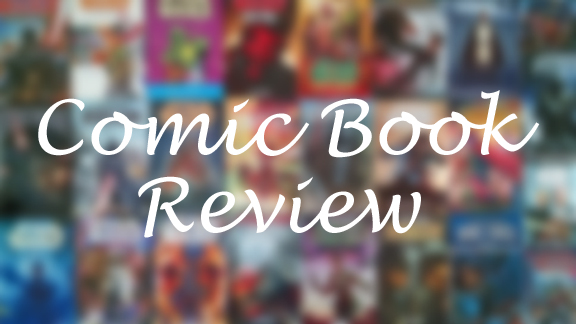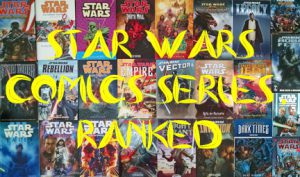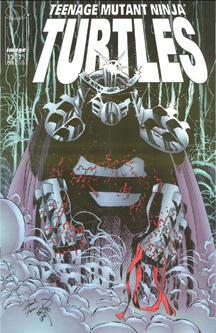Back when “Teenage Mutant Ninja Turtles” Volume 3 was hitting the shelves, I didn’t understand the concept of “universes” within comic publishing – the Marvel Universe, the DC Universe, etc. My “TMNT” comics collection had a few holes in it at the time, so when I saw “The Knight Watchman Returns!” on the cover of Issue 9, I assumed I had missed an issue somewhere.
And I never really liked other superheroes – Justice Force, Radical, Nobody – stealing the Turtles’ spotlight anyway, so covers like this turned me off from collecting the series.
Integrating with Image
Years later, as I read Issues 9-16 (some for the first time), I can say that was a mistake on my part to overlook these issues. Don’t get me wrong, I still dislike the fact that the Turtles are suddenly joined by a ton of what I now realize are Image Universe heroes (the Knight Watchman, the Savage Dragon, Vanguard) and a villain (mass-murderer-turned-outer-space-soul-sucker Deathwatch).

“Teenage Mutant Ninja Turtles” Vol. 3 Issues 9-16 (1997-98)
Writer: Gary Carlson
Pencils: Frank Fosco
Inks: Erik Larsen, Chance Wolf, Andrew Pepoy, Mark Heike
They also go to an Image Universe locale, Midway City, plus Chicago, and Arkansas, further distancing themselves from their home turf. While “Big Bang Comics” Issue 10 and the various “TMNT/Savage Dragon” crossovers eased readers into the idea that the Turtles resided in the Image Universe, it still didn’t feel quite right to me.
A Deathwatch detour
But this batch of issues, the Turtles’ “Image Universe Tour,” is still very readable because Gary Carlson continues to be a whiz-bang plotter and action writer, Frank Fosco’s art continues an upward trend (thanks to Andrew Pepoy’s and Mark Heike’s improved inking), and the fact that the Image characters truly are guest characters.
These issues can still be enjoyed as “TMNT” yarns; although Deathwatch’s soul-sucking rampage is continued from “Vanguard,” it’s not prerequisite reading, nor is the Knight Watchman’s first meeting with the Turtles in “Big Bang Comics” 10 (although that’s worth reading due to its early Oroku Saki yarn).
Readable though it may be, the Deathwatch arc is decidedly a detour away from the Splinter-as-rabies-crazed-bat dilemma, which thankfully picks up again at the end of this batch. Also compelling is whatever the heck is going on inside Donatello’s head: Is he a cyborg, or is he our beloved Donny, or is he both?
Raph as the Shredder?!
Best of all – and most memorable of all, even for fans with only passing familiarity with the Image series – Raphael dons Shredder’s armor and takes over leadership of the Foot Clan, whom he respects more than the equally villainous rival mobsters, because at least they are ninjas like him.
This isn’t quite like Luke Skywalker turning to the Dark Side in “Dark Empire”; as soon as Raph (in Shredder’s armor) and Leo (disguised as a Shredder Elite) realize they are fighting each other, they drop their weapons and laugh about it.

Carlson tiptoes into the Dark Side, notably when Raph uses a machine gun to mow down the mobsters who attack Foot HQ (a throwback to “Bodycount,” where Raph briefly showed a perverse enjoyment of using guns, almost as if his personality flips channels when he puts finger to trigger).
However, at the end of the day, he’s still Raph – yeah, the most “loner” Turtle, but still one of the gang. And judging by his team-up with the Foot, Raph is arguably the Turtle who most desires people he can relate to. Now that I think about it, Don is the Turtle most comfortable being alone.
The Astral Plane
Issue 16 gives closure to this chunk of storyline, incorporating the Astral Plane as a way to get Splinter and Donny back to normal (he’s still a half-Turtle, half-robot, but at least it’s totally his mind in there now).
Despite the incredible amount of story elements in play (arguably too many during the Image Universe Tour), Carlson does a good job of giving everything a purpose; while mystical things like Astral Planes can be cheats in lesser books, he earns the mysticism here. I also like how the Astral Plane scenes are drawn lightly so they are clearly distinguished from the more heavily inked real-world scenes.
Ultimately, I like the fact that the “Image Universe Tour” largely takes place outside of New York. It’s sort of like the Turtles’ extragalactic tour to Triceraton battlegrounds early in Mirage Volume 1. (Speaking of which, Fugitoid could’ve been a great sounding board for Don dealing with his new cyborg status.)
When they return to New York, it’s like a signal that the saga is setting aside the sci-fi/superhero part of “TMNT” and getting back to street-level (or below) “TMNT.” A latecomer to Volume 3 could actually pick up Issue 17 and feel right at home in the sewers, and not feel totally lost from the narrative … aside from wondering why Don’s a cyborg.

